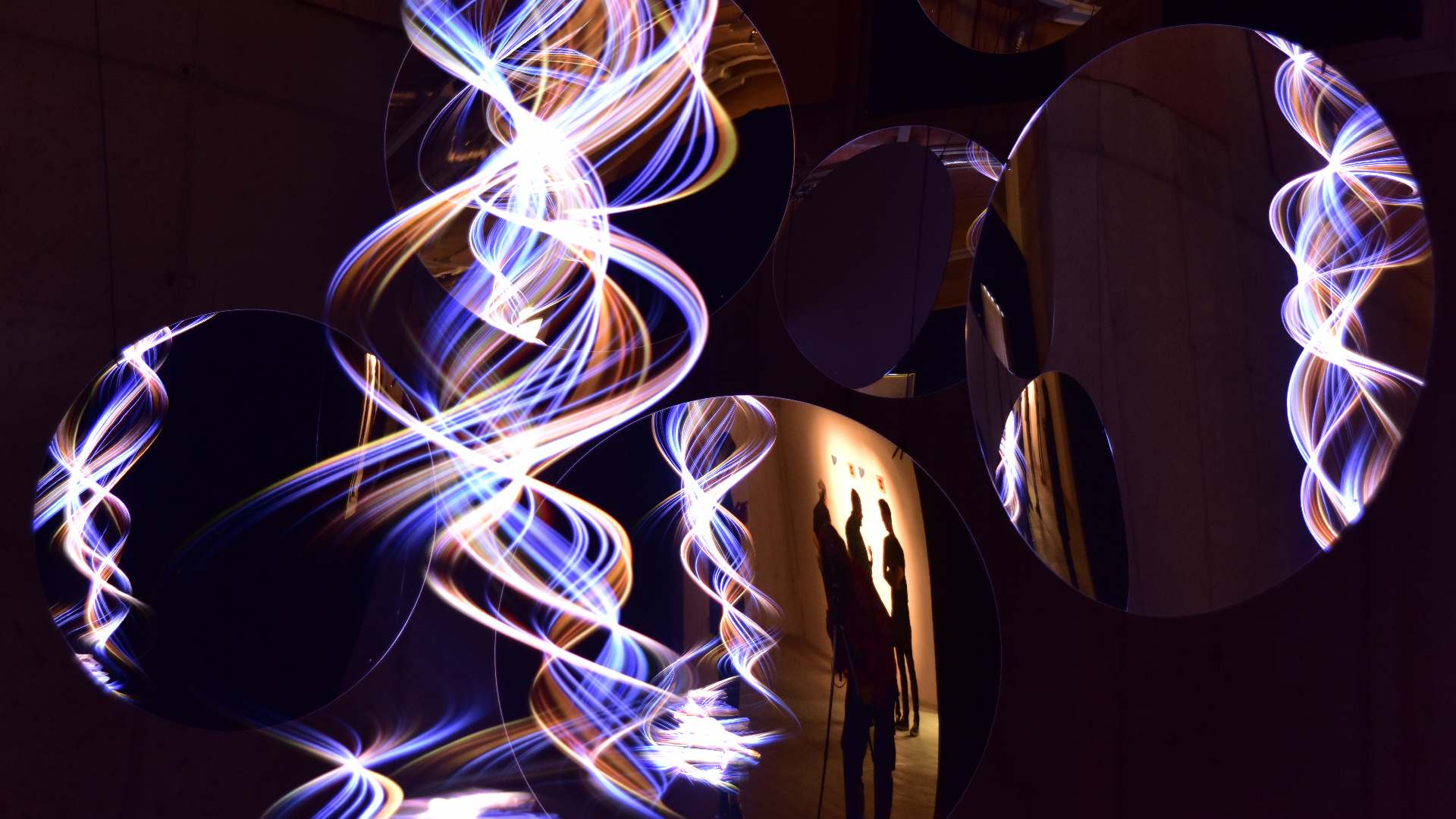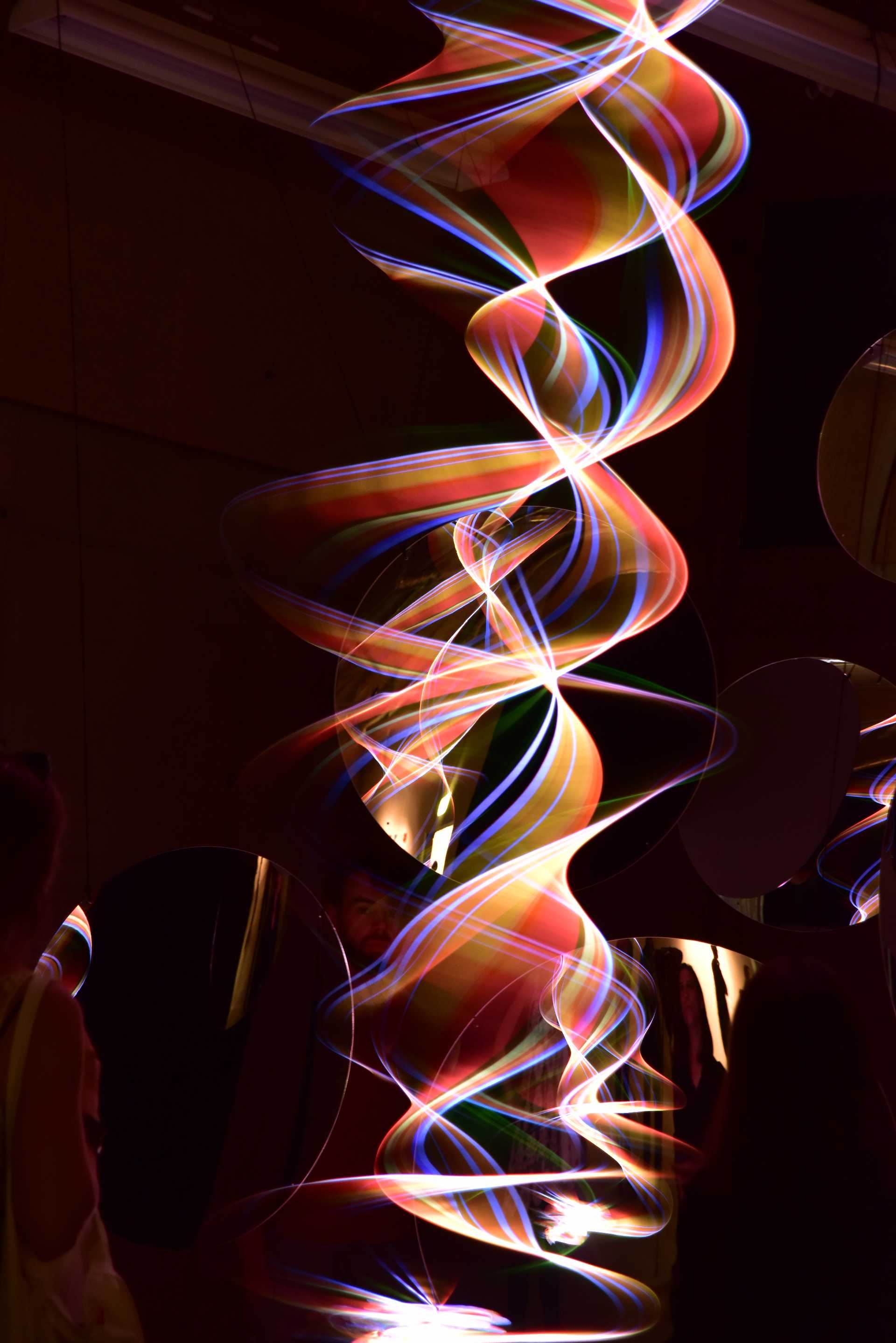Ars Electronica 2018
It's a long scroll/stroll down, please continue
Set in the depths of a former war time bunker, initially converted to a postal sorting office, subsequently to be partly abandoned and turned over to use as an occasional arts centre.
Ars Electonica Festival is at POSTCITY, Linz ( and other venues) Linz, Austria, September 6-10. It is the world's largest festival of electronic arts and this year featured works by over a thousand artists.

POSTCITY is almost like a castle, visitors enter by climbing a ramp and crossing a bridge to find the welcome desk and the first of the hundreds of exhibits awaiting them. Alongside the artworks, the great parcel and letter sorting machines are all still standing there, like a vast sculptural installation, with rows of spiral chutes big enough for a person to slide down (and yes you are allowed!) and conveyor belts long since turned off and static, stretching off into some indefinite distance. It is only after wandering this maze for who knows how long past numerous fascinating exhibits they will find their route drawn downwards and entering into an almost endless narrow corridor, which finally discgorges them into the darkness of the windowless basement bunker level below. And once they have made this journey, the next corner they turn brings them to a room which has become temporary home to part of the BEEP Electronic Art Collection.

The bright new member of the collection, a dancing waveform, partly surrounded by a group of circular mirrors takes centre stage. By now those who know my work will recognise the characteristic fascination with kinetic colourful waveforms, this installation explored new limits to how chaotic they could become, at times tangling, ah but I had not told you the theme for this years Ars Elctronica festival was Error, and I was totally in the flow.
But before you leave take note of the heavy concrete form quietly standing over to one side
The dancing wave is just one half of a larger installation called Tycho Test One. The concrete is a new experimental material with optic fibres embedded into it, the first ever of its kind to be fabricated in Spain. In future it will become more transparent and the fibres more richly textured in their quality. The concrete was manufactured by Escofet as part of a collaboration organised by the NewArtFoundation in association with Eurecat, a Catolonia based group of industrial companies. This is the first in a series of pieces created through my winning the ATA fellowship for collaborations of industry with an artist.
A special thanks to
BEEP Electronic Arts and their founders Andreu Rodríguez and Marie-France Veyrat, without whose generosity this exhibition would not have been possible, they were the prime sponsors.

Production for the exhibition was provided by
La Agencia with special thanks to Arturo Garrido for development of early ideas on the concrete form, Jaime de Los Rios for engineering, Jordi Llacer for design, Sandro Castillo and Vicente Matallana for production.
How the name 'Tycho: Test One' was chosen:

The shape of the fibre optic concrete was chosen to be a large monolithic flat slab. This reminded me of the monolith that is featured in the movie 2001. It was literally the first slab of this size ever made from this material, hence Test One. According to the movie the monolith is encountered by astronauts on the Moon hidden in the crater called Tycho. Tycho is the name of the greatest astronomer of the 16th century who worked diligently to disprove Copernicus making the finest observations without telescopes and just before their invention. His results were eventually to prove the opposite, and it was his assistant Kepler who found the first mathematically elegant description of a sun centered solar system. So his life's work was based on an error, the theme of this years Ars Electronica. In choosing the specific elements of the installations, I imagined the 'Dancing Wave' as a counterpart to the then mysterious movement of the planets, the mirrors as the observational equipment and the great monolith as the means to record the observations. 'Lux Aerterna', composed by Gyoorgy Ligetti is the soundtrack in the scene in the movie where we are first shown the monolith in the crater Tycho, and is playing in the background to the installation. This version performed by Capella Amsterdam & Daniel Reuss, courtesy of the artists and
Harmonia Mundi / [PIAS].






